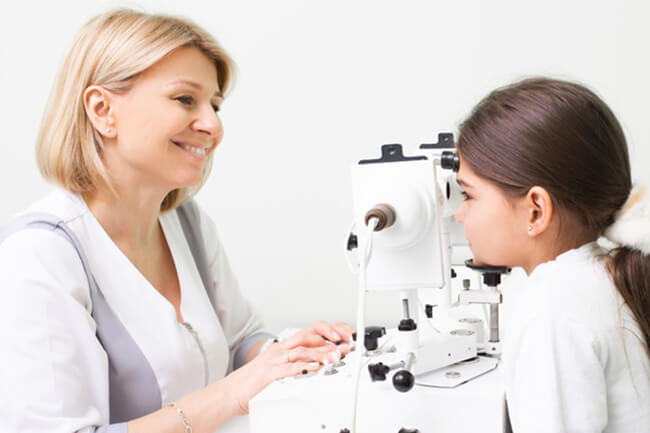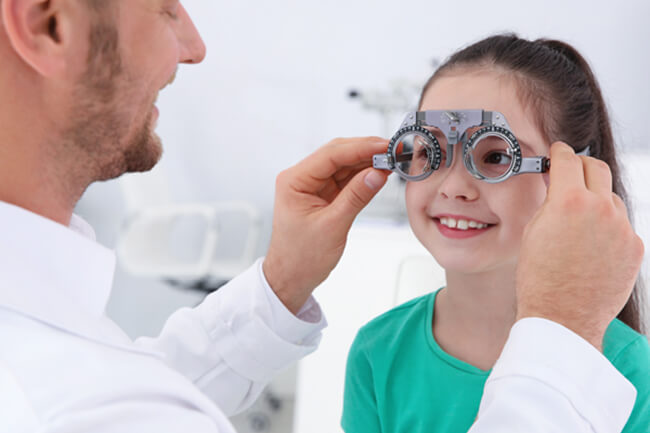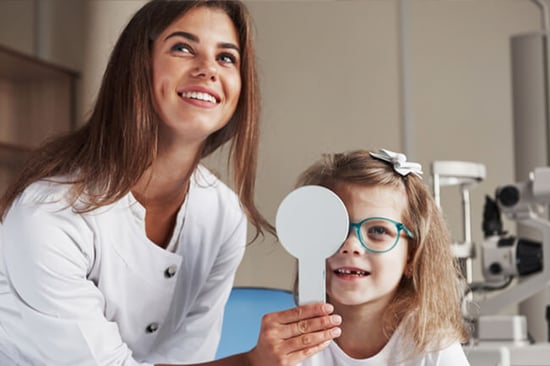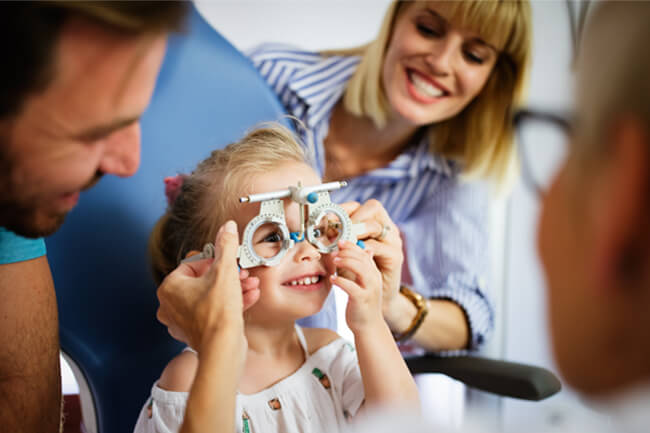Pediatric Eye Exams
Schedule an Appointment
Call 713-668-6828
Children’s Vision
Some experts estimate that approximately 5 – 10% of preschool-aged kids and 25% of school-aged children have vision problems. According to the American Optometric Association (AOA), all children should have their eyes examined at 6 months of age, at age 3, and again at the start of school. Young children without vision problems or risk factors for eye or vision problems should then continue to have their eyes examined at least every two years throughout school.
NOTE: Children with existing vision problems or risk factors should have their eyes examined more frequently.
Common risk factors for children’s vision problems include:
- premature birth
- developmental delays
- turned or crossed eyes
- family history of eye disease
- history of eye injury
- other physical illness or disease
If you are seeking children’s eye examinations in the Houston area, please feel free to contact our practice. Our experienced team will perform a comprehensive vision exam to determine your child’s visual health. At our offices, we offer a wide variety of pediatric eyewear if necessary.


Other Testings that will be done at Your Child’s Exam are:
- Check for indications of crossed eyes
- Check to ensure the child is using both eyes
- Tests to check eye-hand-foot coordination
- Tests to determine how well the child’s vision skills are developing
- Tests to determine normal color vision
How to Tell if Your Child Needs an Eye Exam:
- Holding a book too close to their eyes.
- Difficulty reading the blackboard in school.
- Complaints of blurry eyesight.
- Squinting a lot.
- Closing or covering one eye in order to see.
Common Visual Disorders in Children
A comprehensive pediatric eye exam can diagnose many different eye conditions.
Your child may be nearsighted (myopia), farsighted (hyperopia), or have astigmatism. It is important that children who need glasses, wear them full time when they are young, to develop good vision in each eye and three-dimensional vision.
Some of the more common eye conditions in children are:
- Amblyopia or “lazy eye” – Amblyopia occurs when the vision is reduced in one eye, causing it to be weaker than the other. This can occur because there is a difference in prescription between the 2 eyes and one eye becomes more dominant. Or, amblyopia can occur because of strabismus, or misaligned eyes. If an eye turns in or out, it does not see as clearly as the straight one and becomes weaker. Rarely, cataracts or severely droopy eyelids can cause amblyopia as well. The main treatment for amblyopia is patching the stronger, more dominant eye to allow the weaker eye a chance to gain vision. Dilating drops can also be used in some cases to blur the vision in the better eye, in essence working as a patch.

- Strabismus or misaligned eyes – Eyes can cross in (esotropia), drift out (exotropia), or be higher or lower than the other (hypertropia or hypotropia). For specific kinds of strabismus, glasses are sufficient to straighten a child’s eyes, otherwise, eye muscle surgery is required.
- Ocular abnormalities – Rarely, children can also develop cataracts, retinal or optic nerve problems, which can also decrease their vision.

What Happens at a Pediatric Eye Exam?
During your child’s comprehensive eye exam, visual acuity will be tested. This test measures the smallest object each eye can see at a certain distance. Normally, each eye will be done individually by covering one eye at a time. It may be necessary to tape a patch over a child’s eye to keep him from peeking. The use of the Snellen chart is the most common way to test visual acuity. This chart includes letters and numbers that decrease in size. When taking the test, the distance between the patient and the chart is 20 feet.
20/20 vision is normal. If a person has 20/40 vision, they see at twenty feet what a normal eye sees at forty feet. If a person has 20/200 vision, they are legally blind. They only see at twenty feet what a normal eye sees at two hundred feet. If they have 20/15 vision, they see better than normal. They see at twenty feet what the normal eye would have to bring in to fifteen feet to see.
For children that do not know letters and numbers, they can be tested with the Tumbling E chart. To take this test, the child points his/her finger in the same direction as the E is pointing. Children who are younger than four may have trouble with this test so there are several different tests used to obtain a child’s accurate visual acuity.

